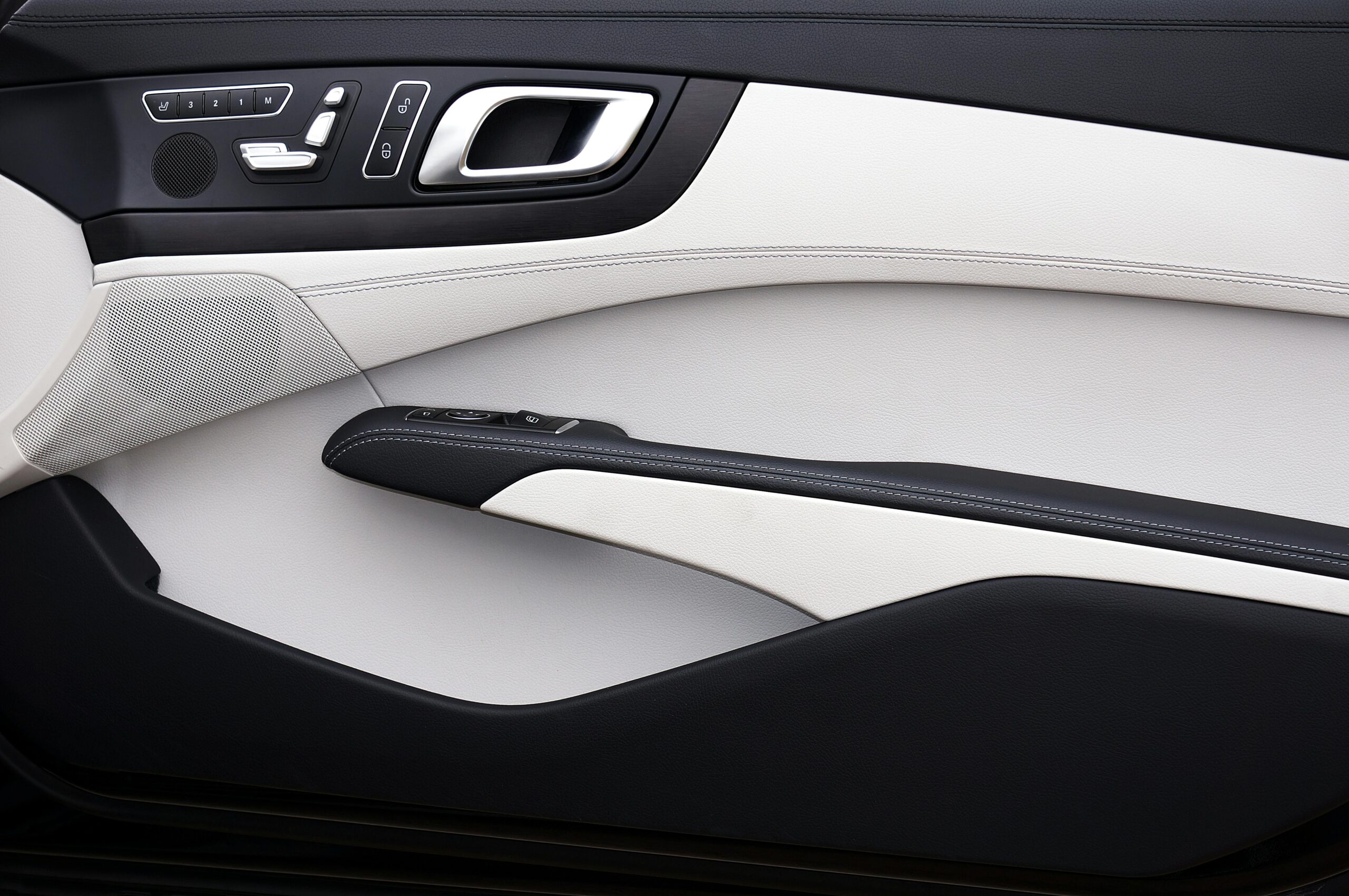Hey there, fellow car enthusiasts! Today, I’m going to share my personal experience and some killer tips on how to clean and restore that pesky black plastic trim on your ride. Trust me, I’ve been there – staring at those faded, gray-looking pieces of plastic that used to be sleek and black. But fear not! I’ve got some awesome DIY techniques that’ll have your car looking showroom-fresh in no time.
TL;DR: Bringing Your Car’s Black Trim Back to Life
- Start clean: Wash your car and scrub the trim with car soap or all-purpose cleaner.
- Choose your weapon: Go for a commercial trim restorer or try DIY methods like olive oil.
- Apply with care: Use circular motions and let the product soak in for best results.
- Protect your work: Finish with a trim protectant to keep that fresh look longer.
- Stay consistent: Regular cleaning and protection is key to maintaining that showroom shine!
Remember, a little TLC goes a long way in keeping your car’s trim looking fresh. Happy detailing!
Why Bother with Black Plastic Trim?
Let’s face it, folks. Your car’s exterior trim is like the icing on a cake – it might seem small, but it makes a huge difference in the overall appearance. When that trim starts to fade and look ashy, it can make even the cleanest car look neglected. Plus, taking care of your trim isn’t just about looks; it’s about protecting your investment and maintaining your car’s value.
Understanding the Enemy: UV Damage and Oxidation
Before we dive into the nitty-gritty of cleaning and restoring, let’s talk about why your trim fades in the first place. The main culprits? UV rays and oxidation. Yep, that beautiful sunshine we all love is actually your car’s worst enemy when it comes to plastic trim. Over time, UV rays break down the plastic, causing it to fade and lose its deep, rich color.
The Ultimate DIY Cleaning Process
Alright, let’s roll up our sleeves and get to work! Here’s my step-by-step guide to bringing your black plastic trim back to life:
Step 1: Gather Your Arsenal
First things first, you’ll need to assemble your cleaning squad. Here’s what I recommend:
- Car wash soap (pH-neutral is best)
- Microfiber towels (trust me, you can never have too many)
- Soft-bristle brush
- All-purpose cleaner
- Plastic trim restorer (I swear by Solution Finish or Meguiar’s Black Plastic Restorer)
- Foam or microfiber applicator pads
- Plastic trim protectant
Step 2: Give Your Car a Bath
Start with a clean slate by washing your entire car. Use that pH-neutral car wash soap and pay extra attention to the trim areas. This step is crucial because it removes all the surface dirt and grime, making your restoration efforts much more effective.
Step 3: Attack the Trim
Now, here’s where the real work begins:
- For mildly dirty trim:
- Use your car wash soap and soft-bristle brush to gently scrub the trim.
- Rinse thoroughly with clean water.
- For heavily soiled or neglected trim:
- Apply an all-purpose cleaner to the trim.
- Use a medium-bristle brush to scrub the surface thoroughly.
- Rinse well with clean water.
Pro tip: Be gentle but thorough. You want to clean the trim, not scratch it!
Step 4: Dry It Off
Use a clean microfiber towel to dry the plastic trim completely. This step is super important because any leftover water can interfere with the restoration product.
Step 5: Restoration Time
This is where the magic happens:
- Choose your weapon – I mean, trim restorer. As I mentioned, Solution Finish or Meguiar’s Black Plastic Restorer are my go-to products.
- Apply a small amount to a foam or microfiber applicator pad.
- Work the product into the trim using circular motions. Make sure you get even coverage.
- Let it sit for about 30-45 seconds to really penetrate the plastic.
- Use a clean microfiber towel to remove any excess product.
Warning: Be careful not to get the restorer on painted surfaces. That stuff can stain! If you do get some on the paint, wipe it off immediately.
Step 6: Protect Your Hard Work
To keep that freshly restored look:
- Apply a plastic trim protectant using a clean applicator pad.
- Massage it thoroughly into the trim.
- Let it sit for 10-20 seconds.
- Wipe off any excess with a clean microfiber towel.
DIY Alternatives: When You’re in a Pinch
Sometimes, you might not have a commercial trim restorer on hand. Don’t worry, I’ve got you covered with some DIY alternatives:
The Olive Oil Method
Yeah, you read that right – olive oil! Here’s how:
- Clean the trim as described earlier.
- Apply a small amount of extra virgin olive oil to a microfiber towel.
- Rub it into the trim using circular motions.
- Let it soak for 5-10 minutes.
- Buff with a clean, dry towel.
Keep in mind, this method might need to be repeated weekly for best results. But hey, at least your car will smell like a fancy salad!
The Heat Gun Method
This one’s a bit more advanced and requires some caution:
- Clean the trim thoroughly.
- Use a heat gun to carefully heat the plastic trim. This draws out the oils in the plastic.
- Be super careful not to overheat and warp the plastic.
- After heating, apply olive oil or a trim restorer for added protection.
Word of caution: This method can be effective, but it also carries a risk of damaging your trim if you’re not careful. Use at your own risk!
Maintenance: Keeping That Fresh Look
Alright, so you’ve put in the work and your trim is looking fantastic. How do you keep it that way? Here are some tips:
- Regular washing: Don’t let dirt and grime build up on your trim. Give your car a good wash at least every couple of weeks.
- Monthly protection: Apply a trim protectant monthly, especially if your car spends a lot of time in the sun.
- Use the right products: Stick to trim-specific products rather than all-purpose dressings. They might cost a bit more, but they’ll last longer and provide better protection.
- Park smart: If possible, park in a garage or use a car cover to protect your trim from UV damage.
The Science Behind Plastic Trim Care
Let’s get a bit nerdy for a moment. Understanding the science behind plastic trim care can help you make better decisions in maintaining your car’s appearance:
- UV Protection: The sun’s ultraviolet rays are the main culprit in fading and degrading plastic trim. That’s why many trim restorers and protectants contain UV inhibitors.
- Plasticizers: These are additives in the plastic that keep it flexible. Over time, they can leach out, causing the plastic to become brittle and faded. Good trim products help replenish these plasticizers.
- Oxidation: This chemical process occurs when oxygen molecules interact with the plastic surface, causing it to break down and fade. Regular cleaning and protection help prevent this.
Environmental Considerations
As car enthusiasts, we have a responsibility to consider the environmental impact of our car care routines. Here are some eco-friendly tips:
- Use biodegradable cleaners: Look for environmentally friendly car wash soaps and cleaners.
- Conserve water: Use a bucket instead of letting the hose run continuously when washing your car.
- Dispose of products properly: Never pour leftover cleaning products down the drain. Check with your local waste management facility for proper disposal methods.
Conclusion: Your Car, Your Pride
There you have it, folks – my comprehensive guide to cleaning and restoring black plastic trim on your car. Remember, taking care of your car’s trim isn’t just about aesthetics; it’s about preserving your vehicle’s value and showing pride in your ride.
Don’t be discouraged if your first attempt doesn’t yield perfect results. Like any skill, trim restoration takes practice. Keep at it, and you’ll soon be impressing your neighbors with your car detailing prowess.
So, what are you waiting for? Grab those cleaning supplies and get to work! Your car’s trim is begging for some TLC. And hey, once you’re done, why not share your before-and-after pics? I’d love to see your transformation stories!
Remember, a well-maintained car is a happy car. Now go out there and make your ride shine!



